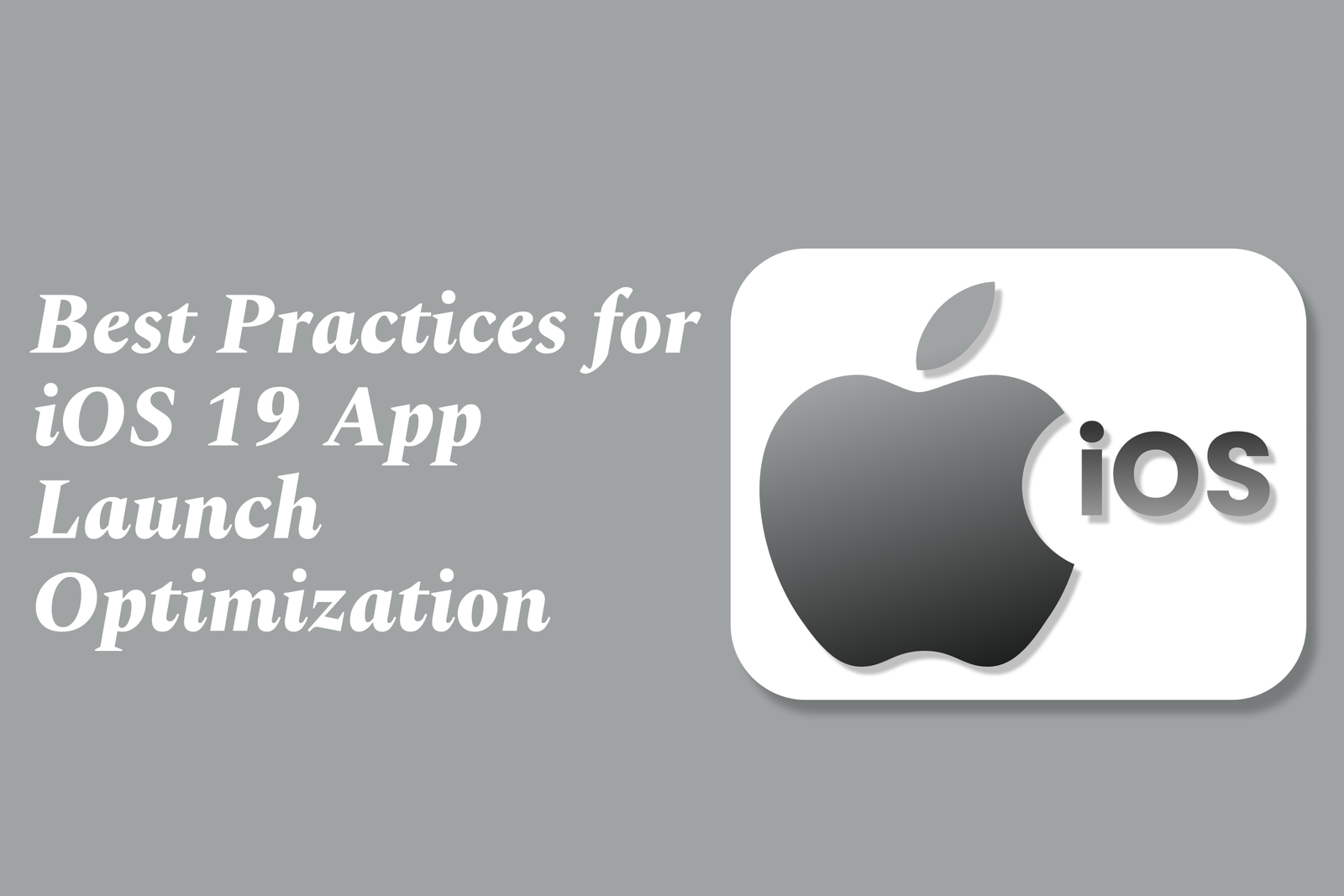Best Practices for iOS 19 App Launch Optimization
Best Practices for iOS 19 App Launch Optimization focus on minimizing app startup time by deferring non-essential tasks, parallelizing initializations, optimizing code and libraries, streamlining authentication, and using splash screens to enhance user experience and ensure fast, smooth app launches.
Best Practices for iOS 19 App Launch Optimization
1 ) Introduction to App Launch Optimization
App launch time significantly impacts user experience, especially with iOS 19 and modern app complexities.
The goal is to reduce delays from app start to home screen display while maintaining features and security.
2 ) Key Factors Affecting App Launch Time
Initialization of external services such as Firebase.
Authentication processes including token verification.
Loading local user session preferences.
Preloading essential API data and initializing app state management (Blocs, Cubits in Flutter).
Navigation handlers for managing user redirection based on authentication status.
Use of wrapper or splash screens to ensure readiness before displaying main UI.
3 ) Best Practices to Reduce Loading Time
3.1 ) Deferring Non Critical Tasks
Postpone heavy API calls and non essential data fetching until after the home screen is presented.
Prioritize critical initialization that affects navigation and authentication.
3.2 ) Parallelizing Initialization
Execute independent initialization tasks concurrently to leverage multi threading capabilities.
For example, run Firebase setup, preference loading, and API calls in parallel if possible.
3.3 ) Optimizing Third Party Library Usage
Minimize or replace large external libraries with smaller, efficient alternatives.
Use production build flags (e.g., Flutter’s release and prod modes) to reduce bundle size and improve performance.
3.4 ) Lazy Loading UI Components
Load only essential UI components initially; defer loading of less critical views or features until needed.
3.5 ) Code Refactoring and Cleanup
Remove unused code, fonts, and assets to reduce app size and initialization overhead.
Consolidate similar functionalities or pages to reduce duplication and improve loading speed.
4 ) Measuring and Profiling Performance
Use performance profiling tools (e.g., Xcode Instruments, Flutter DevTools) to identify bottlenecks.
Analyze app startup time in real device conditions rather than simulators.
Record and monitor app launch time regularly to validate optimization effectiveness.
5 ) Managing Navigation and Authentication Flow
Simplify navigation logic to minimize conditional delays.
Cache authentication states securely to avoid repeated network calls during app start.
6 ) Enhancing User Perceived Performance
Use animated splash screens or placeholders to engage users during loading.
Provide immediate visual feedback while background processes complete.
7 ) Continuous Improvement Recommendations
Stay current with iOS 19 updates that may affect app initialization or security requirements.
Monitor App Store guidelines and device capabilities for further optimization opportunities.
Iterate on app launch design leveraging new iOS features such as asynchronous APIs for smoother startup.
In summary, optimizing iOS 19 app launch centers on minimizing unnecessary delays through deferral, parallelization, and code efficiency, combined with effective profiling and user friendly startup experiences. Implementing these best practices ensures faster access to app content and improved overall user satisfaction.
https://justacademy.in/news-detail/android-parental-control-feature-updates
https://justacademy.in/news-detail/flutter-game-development-is-gaining-momentum
https://justacademy.in/news-detail/apple?s-push-notification-updates-for-ios-19
https://justacademy.in/news-detail/the-rise-of-react-native-in-augmented-reality-apps
https://justacademy.in/news-detail/flutterflow-and-low-code-revolution-in-2025
Related Posts
In 2025, top Angular libraries offer modern, feature-rich components and tools for building dynamic web apps. From powerful data grids to low-code platforms like UI Bakery, these libraries enhance development speed, UI design, and scalability, making them essential for Angular developers.
Migrating from AngularJS to Angular 17 involves gradually upgrading your app by running both frameworks together using tools like ngUpgrade, rewriting components in TypeScript, and adopting Angular’s modern architecture to enhance performance, maintainability, and long-term support.
Angular state management tools help organize and handle app data efficiently, improving scalability and maintainability. Popular options include NgRx for robust, RxJS-based patterns, and newer Signal Store solutions that offer simpler, reactive approaches integrated tightly with Angular’s latest features.
RxJS in Angular empowers developers to manage asynchronous data streams with powerful operators like `forkJoin`, `combineLatest`, and `zip`. Mastering these key operators in 2025 is essential for building efficient, reactive applications that handle complex event sequences seamlessly.
Angular performance optimization in 2025 focuses on improving app speed and responsiveness by using techniques like OnPush change detection, lazy loading, efficient data caching, and AOT compilation. These practices reduce load times, enhance user experience, and ensure scalable, fast Angular applications.
In 2025, Angular remains preferred for large-scale, enterprise apps with its robust, all-in-one framework, while Vue attracts developers seeking simplicity and fast development for smaller projects. Both frameworks excel, with choice driven by project needs and team expertise.
Angular Signals are a new reactive primitive in Angular 16 that enable fine-grained, efficient change detection by automatically tracking dependencies and updating only affected parts of the UI. They simplify state management and boost app performance, revolutionizing Angular's reactivity model.
Angular interview questions to prepare in 2025 focus on core concepts like components, directives, data binding, routing, and dependency injection, along with TypeScript mastery and latest Angular features to ensure strong practical knowledge for building scalable, efficient web applications.
AngularJS reached its official end of support in January 2022, meaning no further updates or security patches. To ensure app security and performance, developers should consider migrating to modern Angular versions or seek third-party long-term support options if immediate migration isn’t possible.
The Angular Roadmap 2025 highlights upcoming features focused on improving developer experience and performance, including zoneless Angular, Signals integration, enhanced Forms, async data handling, improved HMR, and expanded Angular Material/CDK enhancements, driving modern, efficient web app development.










